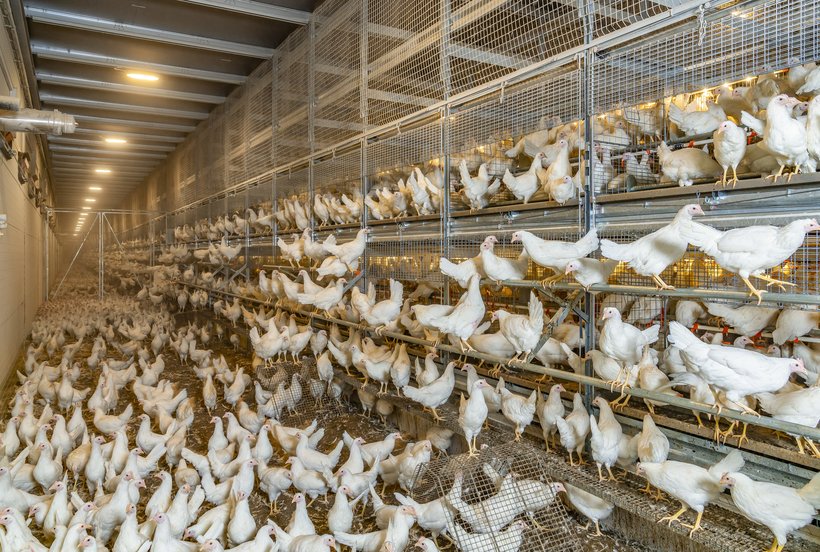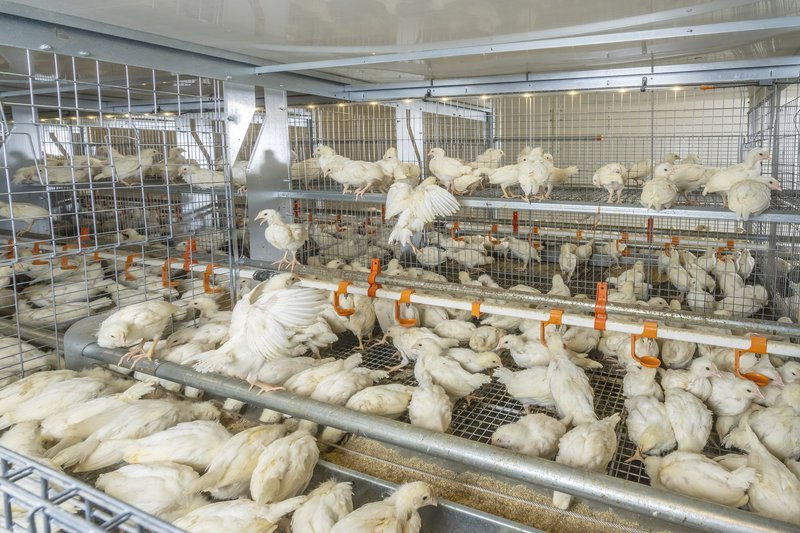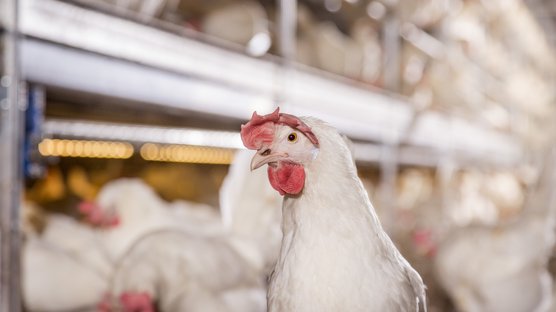
Published on July 23, 2025
Insights in Cage-Free: When is the right time to open the aviary on the rearing farm?
As a general rule, pullets should be reared in systems that are similar to the ones they will inhabit during their productive life. The key here is “intensive training” from day one on the rearing farm. Only with this approach will the birds quickly adapt to the aviary in the production house, as it will contribute to a smooth start towards their laying phase. Benefiting both the bird, and the egg producer.
In the rearing aviary, day-old chicks must have easy access to feed and water. The environment should offer an optimal temperature, appropriate lighting, and good ventilation. These conditions ensure that the chicks grow well, and their fluff transforms into well developed feathers. As the chicks grow, their space requirements increase, and this is when every pullet grower faces the question: When is the right time to open the aviary so that the birds can explore the entire rearing barn on their own?
If you ask five pullet growers, you will probably get five different answers. Some say they only open the aviary after 4 to 5 weeks, when the birds are large enough to enter and exit the aviary without difficulty. Others open it after 10 to 12 days so the birds can start exploring all levels early on. The latter approach is often favoured by the experienced pullet growers, while newcomers tend to be more cautious.
Experience is an important factor, but genetics also plays a significant role. Since the adoption of cage-free housing systems we clearly see the increase in the popularity of white egg layers all across Europe. One of the main reasons is that several of the white egg layer breeds show different behavior in aviary housing systems, adopting quicker the use of the system, resulting in less work for the producers and more 1st quality eggs. From experience, it also quickly became apparent that cage-reared pullets do not adapt well to aviaries in the laying houses, often leading to a high proportion of misplaced eggs (floor and system eggs), resulting in a lot of extra work for the egg producer, and reduced income due to higher egg losses and more second graded eggs. Lessons learned: match the housing system of the rearing and the production farms.

Over the years, pullet growers and housing equipment manufacturers have gained valuable experience. Modern rearing aviaries are highly technical and feature detailed solutions that optimize conditions for both chicks and pullet growers. For example, specially designed front grids allow easy access for the pullet growers, making it easier to monitor the birds. Height-adjustable drinking lines ensure optimal water supply at all ages, while elevated perches above the feed trough keep the feed clean. Raised systems allow pullets to use the entire floor area for scratching. Chick bridges and ramps help pullets to navigate easily through the aviary systems. The stronger and dominant chicks are the first ones to explore, followed by the weaker ones, who then have more space at the feed trough, resulting in less competition and improved uniformity. Additionally, automatically retractable jump bars make access easier. At night, these bars fold down, encouraging the chickens to sleep in the aviary, and minimizing droppings in the aisle as they will drop on the manure belts.
At a very early age, when the system is still closed, an intermediate level inside the aviary trains the pullets to jump and fly. This helps them use the litter area intensively, allowing for earlier opening of the aviaries.
Quoting an experienced pullet grower from the Netherlands: “The earlier they learn to fly, the better it will be in the long run.” If pullets are confined for too long, they may struggle later to navigate well through the laying aviary. They might remain on the floor at night, resulting in a large portion of floor eggs. To prevent this, it is essential to allow the birds to explore the system and their surroundings as early as possible. Ultimately, each pullet grower must decide for themselves whether 10, 20, or 30 days is the optimal time to open the aviary (please comply also with your local legislation). However, as another experienced pullet grower puts it: “Don’t just rely on the computer, watch the birds!”
This article has been written with the support of Janett Peschel, Big Dutchman International GmbH

